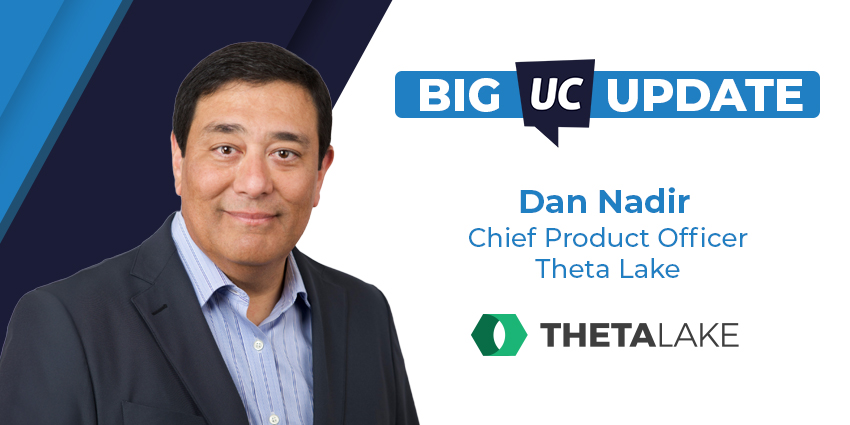As generative AI transitions from the interest phase to the integration phase, the conversation in the UC sphere is shifting towards Agentic AI—or AI agents.
Although still in early development, Agentic AI is beginning to emerge as a powerful tool.
In January 2024, OpenAI introduced agentic AI tasks to ChatGPT, allowing users to schedule actions such as weekly news briefings, daily weather updates, or reminders for concert ticket sales.
While still limited, this marks OpenAI’s first step into Agentic AI.
If there’s anything we’ve learnt from past AI advancements, it’s that developments move quickly.
With Agentic AI potentially being just over the horizon, businesses may soon scramble to integrate it just as they did with generative AI.
However, like its predecessor, Agentic AI faces significant integration challenges. According to PwC, 51% of technology leaders cite compliance with AI-related regulations as a major barrier.
“Many organisations hesitate to integrate Agentic AI into UC systems due to security and data privacy concerns,”
Chris Angus, Vice President for Contact Centre Engagement at 8×8, told UC Today.
As a result, he believes a strong security and compliance strategy will be crucial for companies looking to adopt Agentic AI and gain a competitive edge.
Compliance Challenges of Agentic AI
Agentic AI refers to advanced AI systems capable of autonomous decision-making, action-taking, and continuous learning.
These AI agents interpret context, evaluate options, and adapt their behaviour with minimal human intervention.
Unlike traditional AI, which focuses on automating repetitive tasks, Agentic AI operates with high autonomy, using reinforcement learning to improve over time.
“Instead of just providing basic answers, Agentic AI can assess situations, pull in relevant data, and escalate to a human agent if needed—all without disrupting the conversation,” said Angus.
While these capabilities can enhance customer interactions and reduce workloads for contact centre staff, they also introduce compliance risks.
One major concern is the lack of transparency in decision-making. Often described as a “black box,” Agentic AI can make choices that are difficult to explain—an issue that becomes critical if a system is accused of discrimination.
For instance, if an AI agent escalates cases involving men before women due to an internal pattern it has developed, organisations may struggle to justify its decisions.
The autonomous nature of these systems also raises concerns about accountability and oversight, both of which are key regulatory requirements under the EU AI Act.
The Act mandates that high-risk AI systems—such as those in banking or healthcare—must allow for effective human oversight, which could prove challenging for highly autonomous Agentic AI.
Additionally, Agentic AI systems process vast amounts of sensitive data. Because these models continuously learn, tracing how user data is being processed—a core GDPR requirement—may become increasingly difficult.
All these concerns make Angus believe that AI use is now intrinsically entwined with regulations.
“Choosing AI solutions that align with global standards like GDPR and HIPAA while implementing safeguards to prevent misinformation or harmful outputs is non-negotiable,” Angus emphasised.
Keeping Agentic AI in Check
With these complexities, integrating Agentic AI may seem daunting.
However, as highlighted in a Techtelligence/UC Today report, 48% of respondents struggle to incorporate AI tools into their UC solutions and often turn to external solutions to bridge the gap.
Angus suggests the same approach should be applied to Agentic AI.
“Agentic AI is new territory for many, which is why it’s crucial to partner with industry experts like 8×8 to navigate implementation effectively,” he said.
8×8 provides businesses with the flexibility to integrate Agentic AI in a way that ensures compliance. “Our approach is like a buffet—you can choose the full package or pick only the elements that fit your needs,” Angus explained.
Unlike providers that lock customers into specific AI models, 8×8 allows businesses to bring their own AI, ensuring alignment with their security requirements and industry regulations.
This is particularly beneficial for companies in highly regulated sectors like finance or healthcare, where explainability and oversight are paramount.
Furthermore, because 8×8 owns its own technology stack, it maintains greater control over security and compliance measures. “By owning our technology stack, 8×8 delivers AI solutions that are more secure, customisable, and cost-effective,” said Angus.
This approach helps address potential compliance risks by users using 8×8’s turnkey solutions. “Most issues—such as hallucinations or incorrect information—stem from feeding the wrong data into the platform,” Angus noted. “That’s why we don’t rely on off-the-shelf LLMs. Instead, we train models specifically on validated customer data or our own data.”
Beyond data validation, 8×8 implements guardrails to prevent AI-generated harmful or misleading responses. The platform also includes built-in features such as role-based access control, data encryption, and data residency compliance.
While Agentic AI is designed to operate autonomously, 8×8 recognises the importance of human oversight. Continuous monitoring features allow businesses to track AI performance and address issues early.
“With human-in-the-loop oversight, companies can ensure AI remains aligned with business objectives and compliance requirements,” Angus stated.
Navigating the Future of Agentic AI
The potential benefits of Agentic AI are vast, from improving customer engagement to streamlining operations.
However, its autonomous nature demands a new approach to governance and oversight.
Much like generative AI, compliance and security challenges may prove to be major hurdles for organisations looking to integrate Agentic AI into their CCaaS solutions.
Yet companies that succeed in adoption, according to Angus, will be those that prioritise a robust security and compliance framework—regardless of if they choose to navigate this landscape alone or with partners.







